Christmas disassembly with a canoe
For a while, we spent on studying smart speakers from different manufacturers. We were looking for an opportunity to place our module in them for remote control of devices. How it ended - a topic for another conversation. Since there is a vanishingly little material on the net about disassembling smart speakers, we decided to combine the useful with the pleasant and make a gift to the inner child living in each techie. Allow me to present - material about disassembling the smart column Baidu Raven H
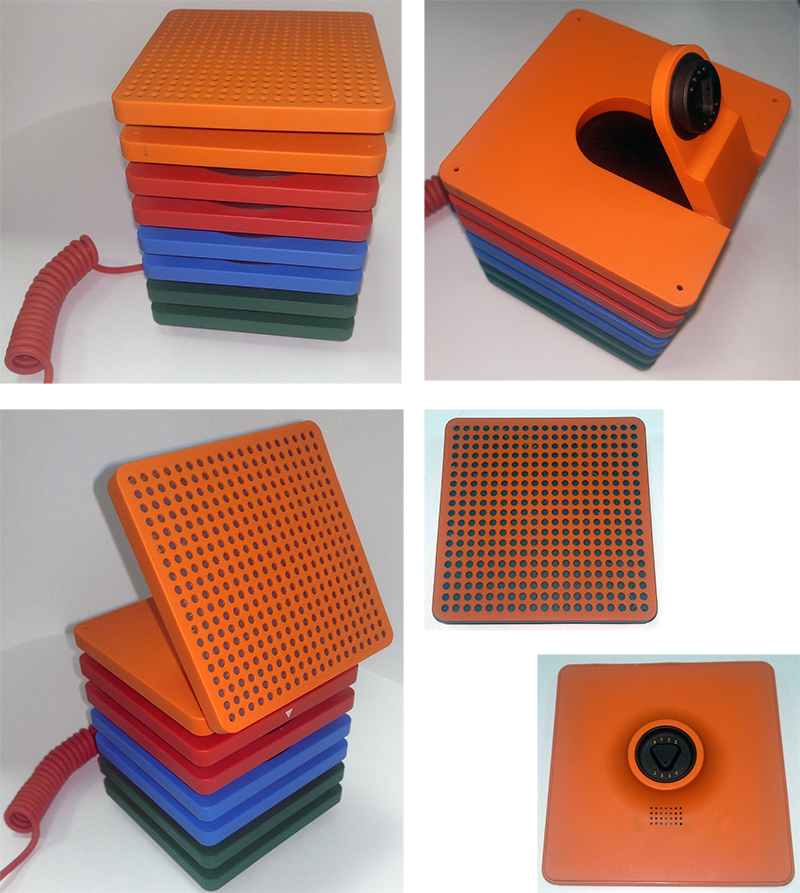
Hereinafter, most of the images are clickable.
The Raven H column is released by the Chinese “Google” Baidu, who ordered the development from the Swedish company Teenage Engineering. Structurally, it is a cylindrical tower with 7 colorful plates strung on it in the upper segment with an LED matrix. Onboard platform voice assistant DuerOS, speaks only in Chinese. Moreover, the command word was not indicated in the documentation and I had to dig deeper into the Chinese segment of the Internet in order to find it. If you need someone, we can send an audio file, but for now let's start disassembling.
')
Detachable upper segment with LEDs, which can be carried with you and through it to control the column. The removable block fastens on magnets. That is why it can be rotated at an angle to the horizon of 0 - 90 degrees on the main body bar and this part does not fall off.
The case is assembled without screws, so you need a plastic card for disassembly. Here is what we see inside:
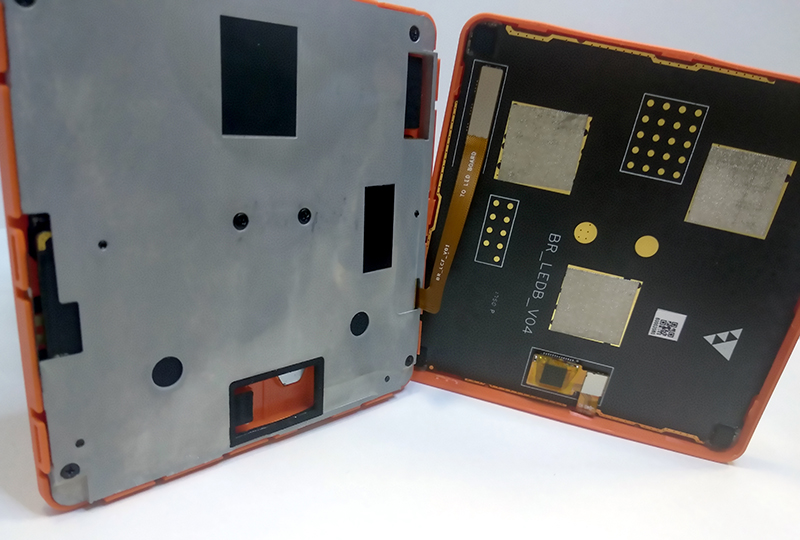
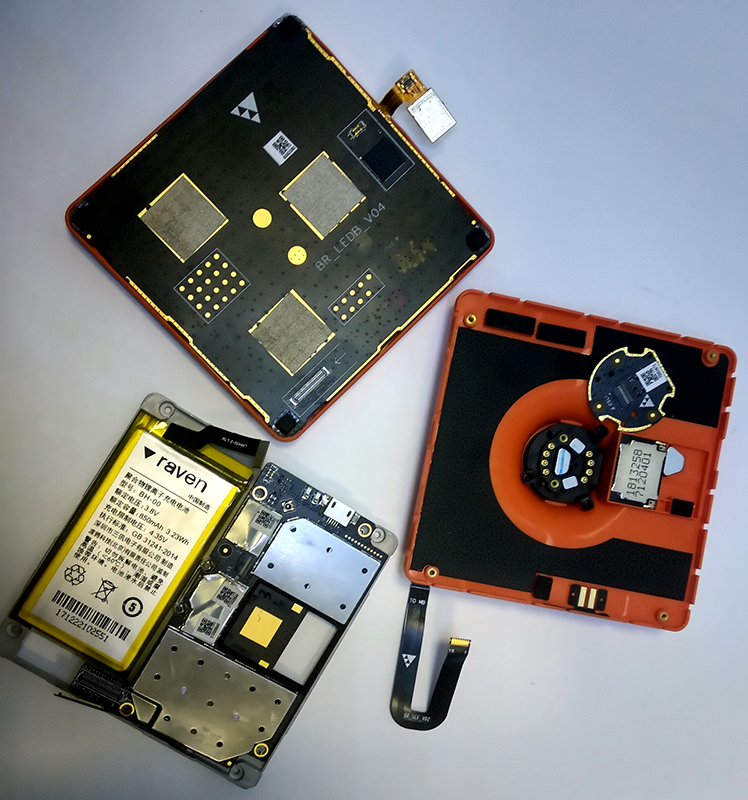
Disassembled Top Panel
Visible board LED matrix and aluminum milled screen. On the bottom of the LED matrix, the FT6236U chip is a 16-bit touch panel microcontroller and four S1819 microphones.
The motherboard of the upper segment is located next to the battery with a capacity of 850 mA · h and a voltage of 3.8 V. From the battery there is a cable to the charge and discharge controllers hidden under the screens. Another loop connects the motherboard and the connector on a small scarf, pressed against the spring contacts next to the magnets in the lower part of the segment.
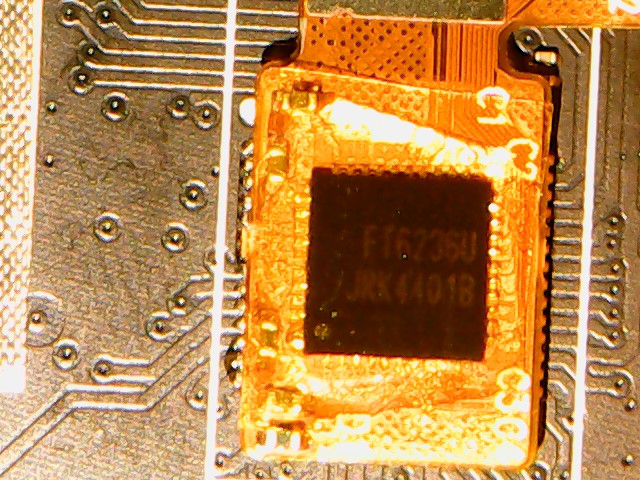
Touchpad controller
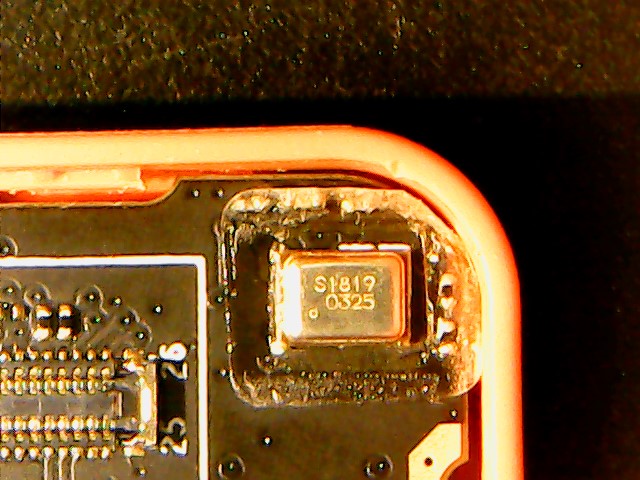
Microphone
We warm up and remove the board of the matrix of LEDs and the touchscreen.
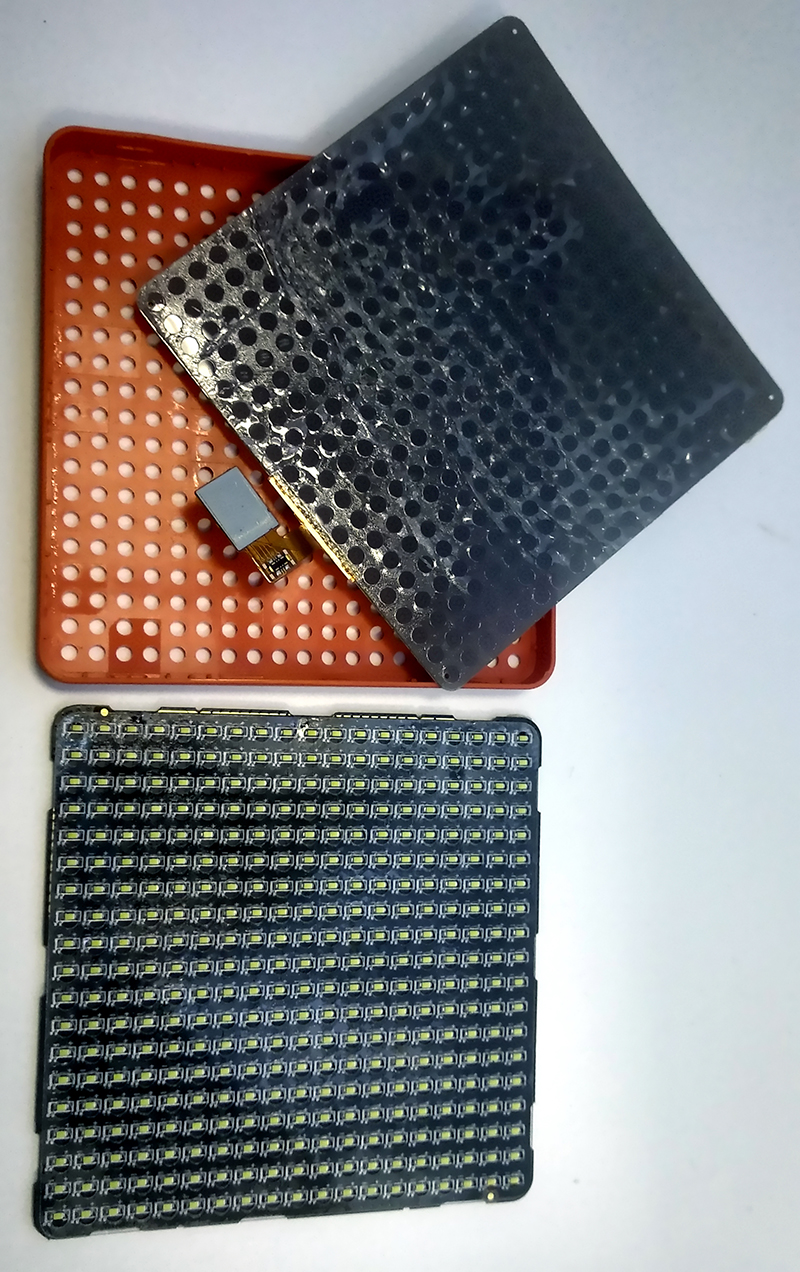
LED matrix and touch plate
Let us consider in more detail the motherboard of the upper segment.
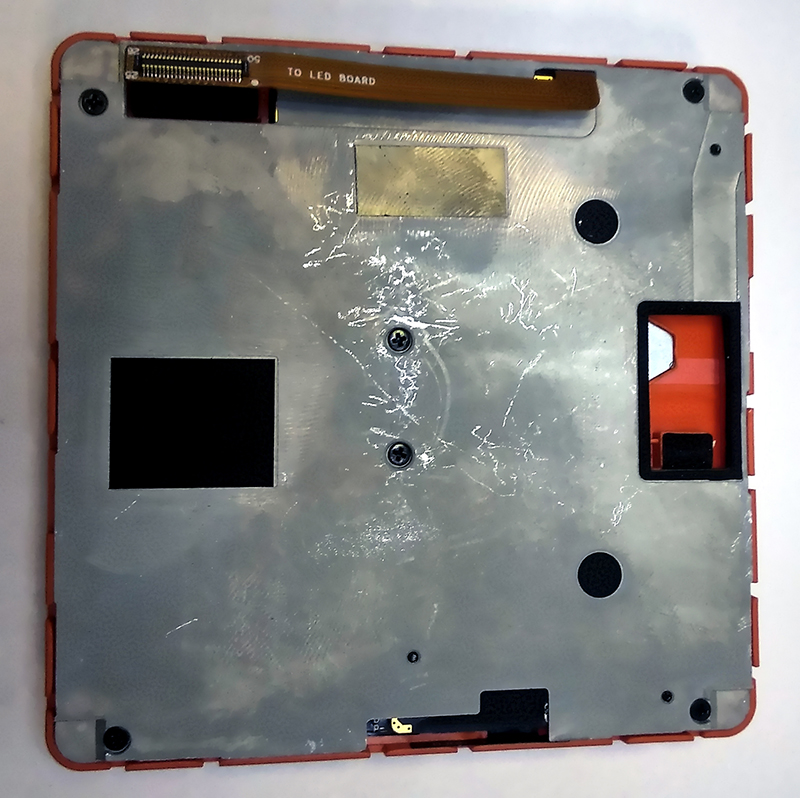
Motherboard screen and heatsink
On the left side, you can discern the markings of the PMI8937 and PM8937 power controllers, often used in mobile technology. It is to them leads the battery cable.
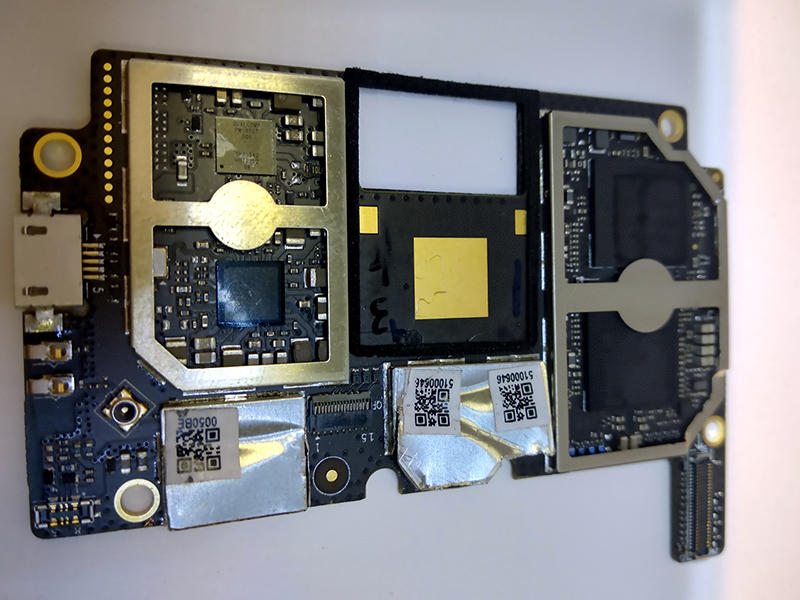
Motherboard with screens removed. Krivenko, but marking is visible
On the right side of the motherboard are unidentified m / c FU74726K and H9TQ17 flash memory with 16 GB x32 power:

Under the two small screens on the motherboard are the WCN3660B wireless module that supports Bluetooth 4, the STM32F051K6 microcontroller, which controls the removable part. As for the C823A, we are not sure, but it looks like it is the CX20823 , which is responsible for voice control. If someone met and can give explanations on this component - write in the comments, include in the text.

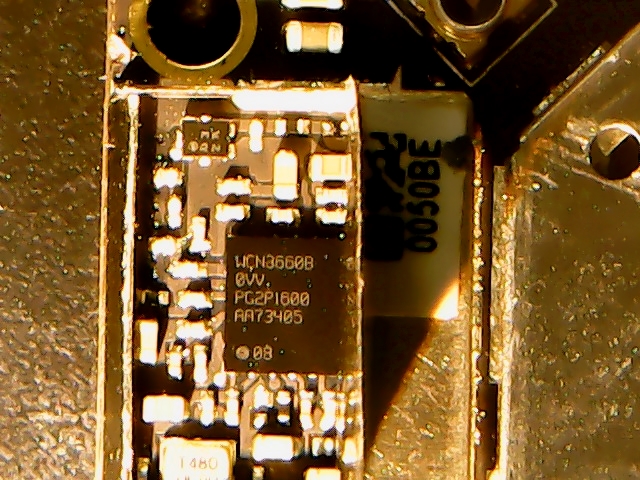
Connection board with a button through which power is supplied to the upper segment of the column:
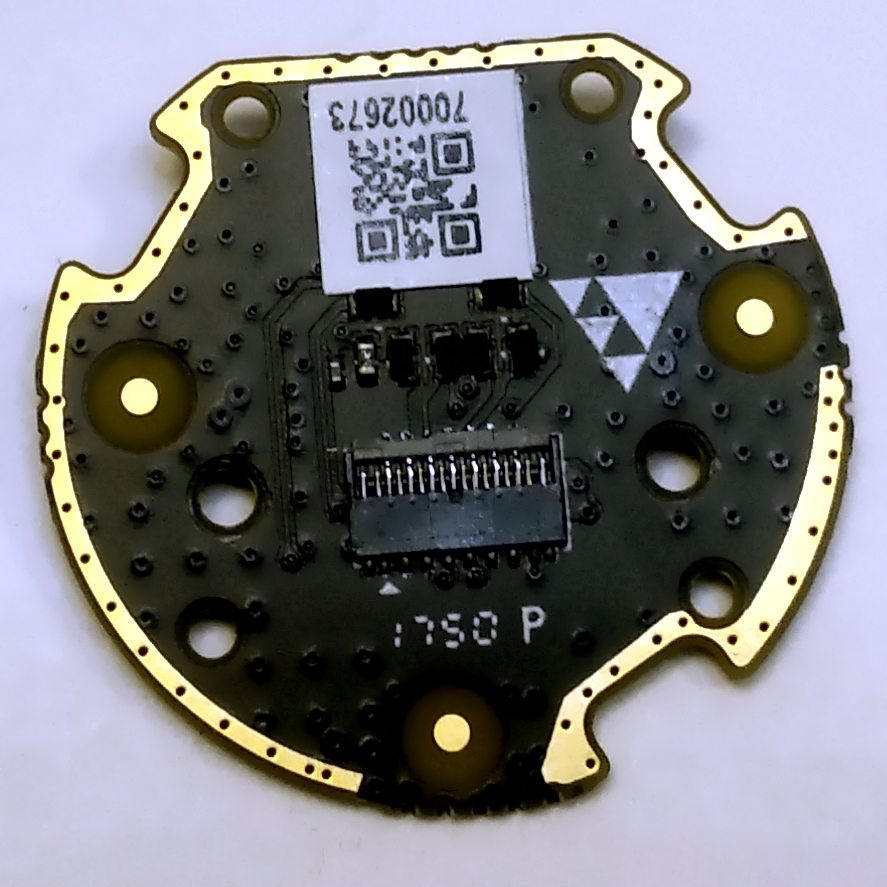

With a portable "remote" finished, consider the main unit. The case is also assembled without the use of fasteners.
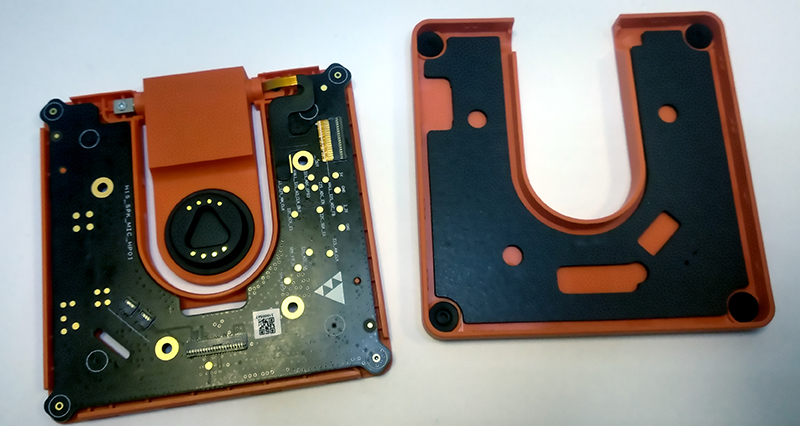
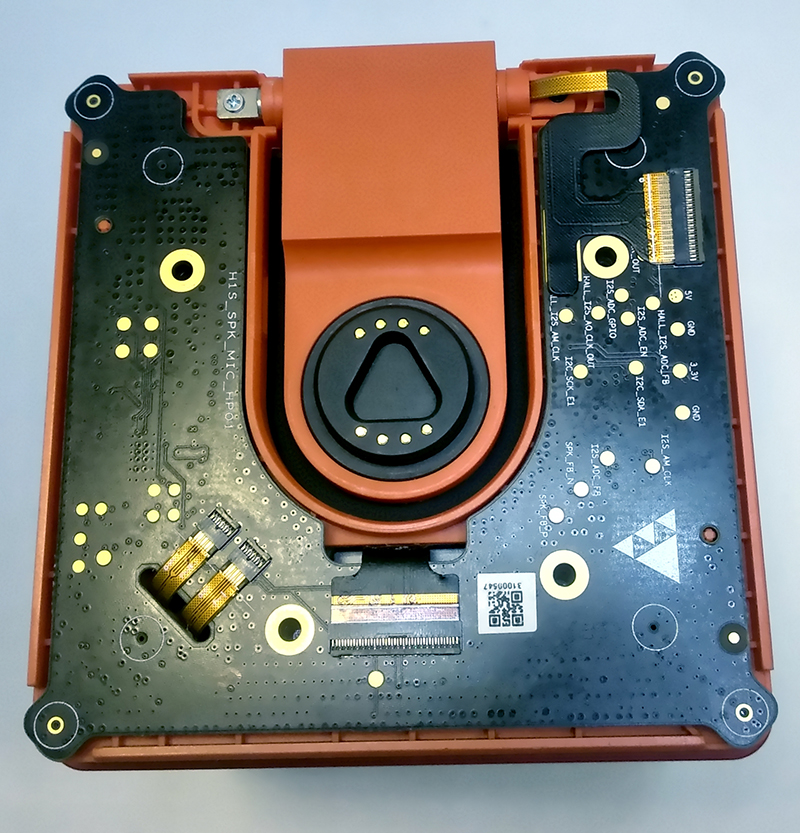
Main speaker unit and top connection board
The upper part of the board contains only connectors, but on the bottom four microphones are visible, covered with silicone caps and a mysterious screen.
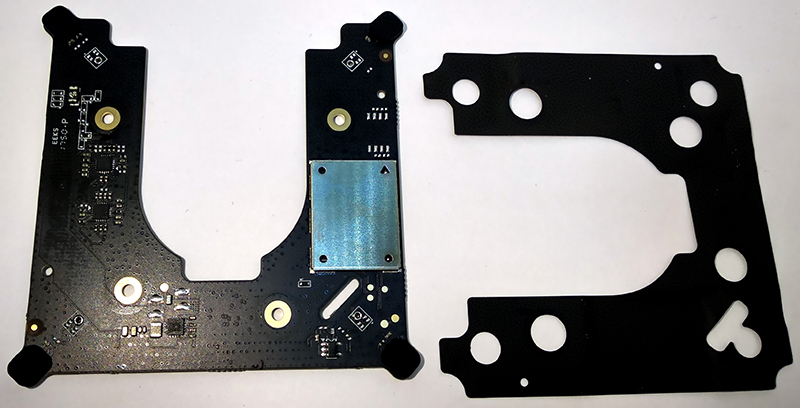
Bottom side of the backplane
Remove the screen and see ... emptiness:
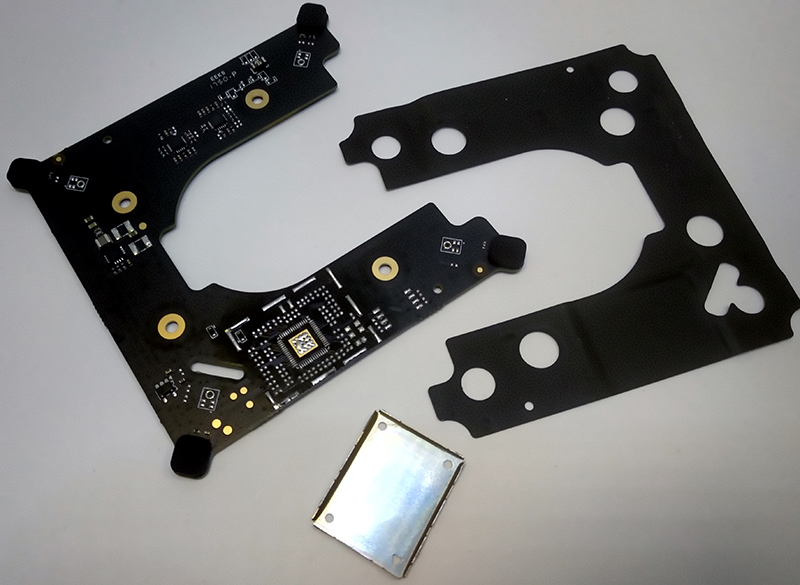
Even on the board there are two previously seen C823A and riddle labeled PTSI TI 79. upd. Which, as suggested by Karlson_rwa, DC-DC converter TPS62130RG :
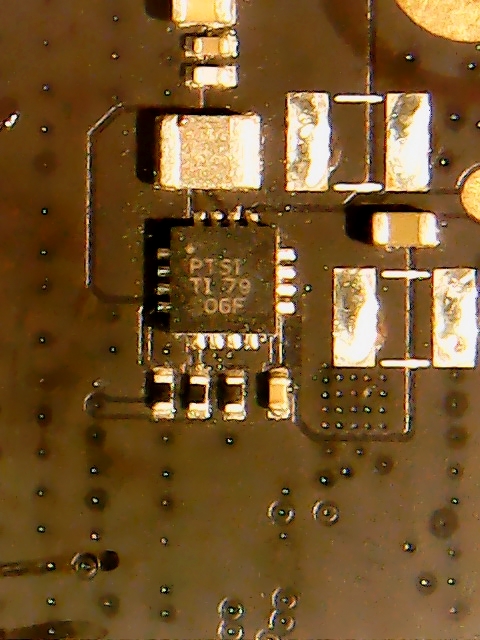
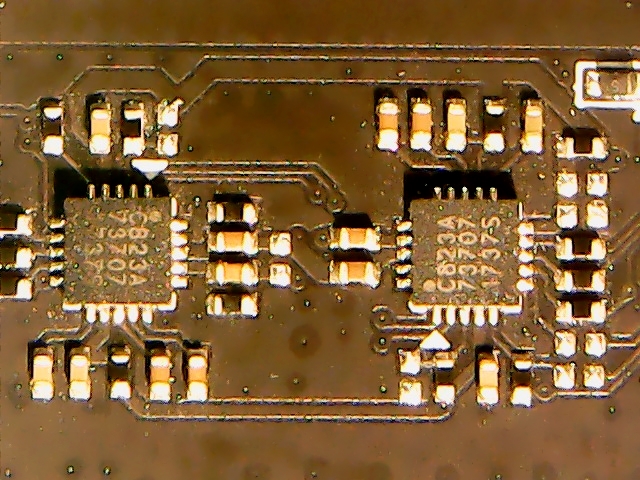
Carefully remove the segments from the main cylinder:
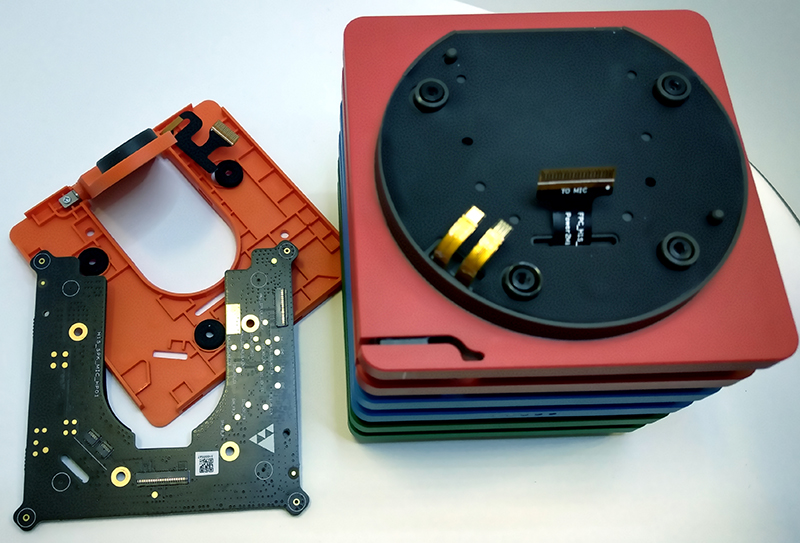
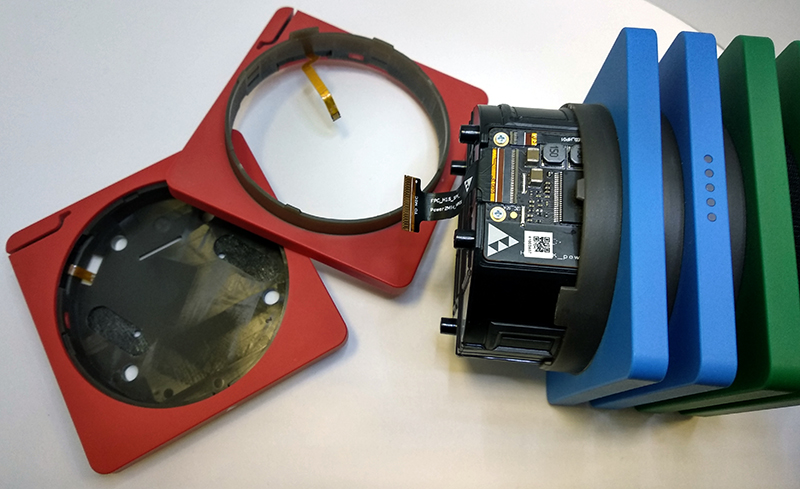
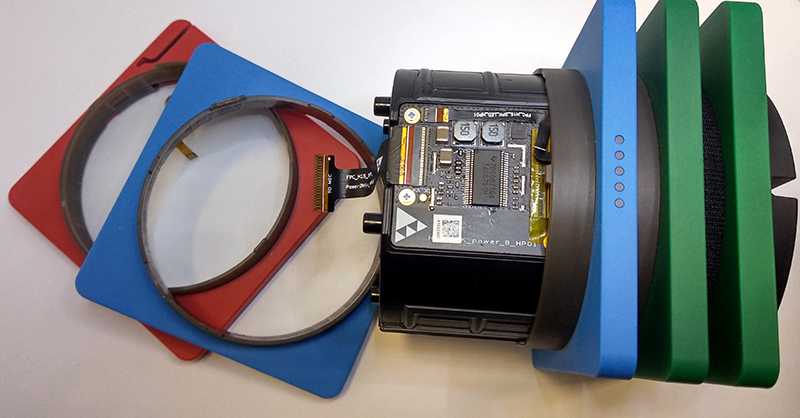
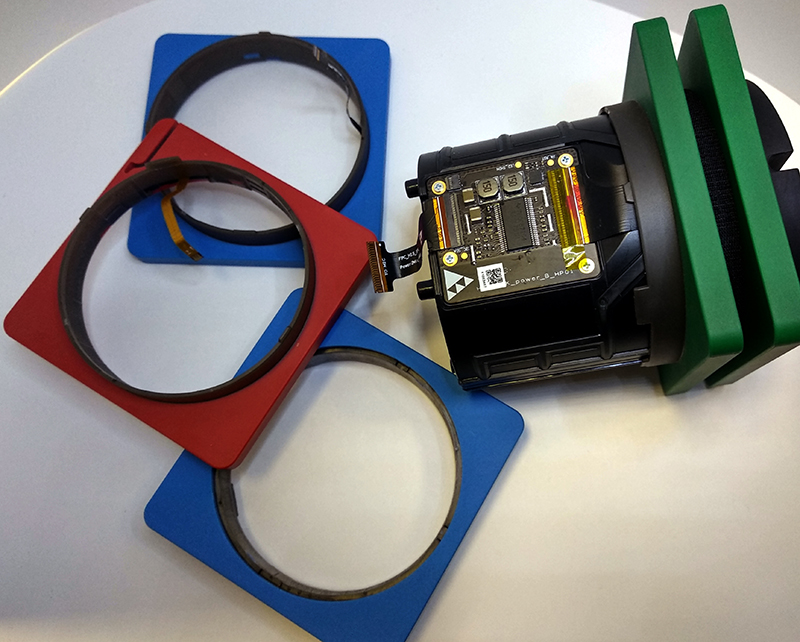

Remove the cylinder, observe the bottom board. It has a big screen and a copper plate:


On the bottom board, there is an AP6255 dual-band Wi-Fi module with AC support, KLM8G1 flash memory and a screen, under which the processor should be:
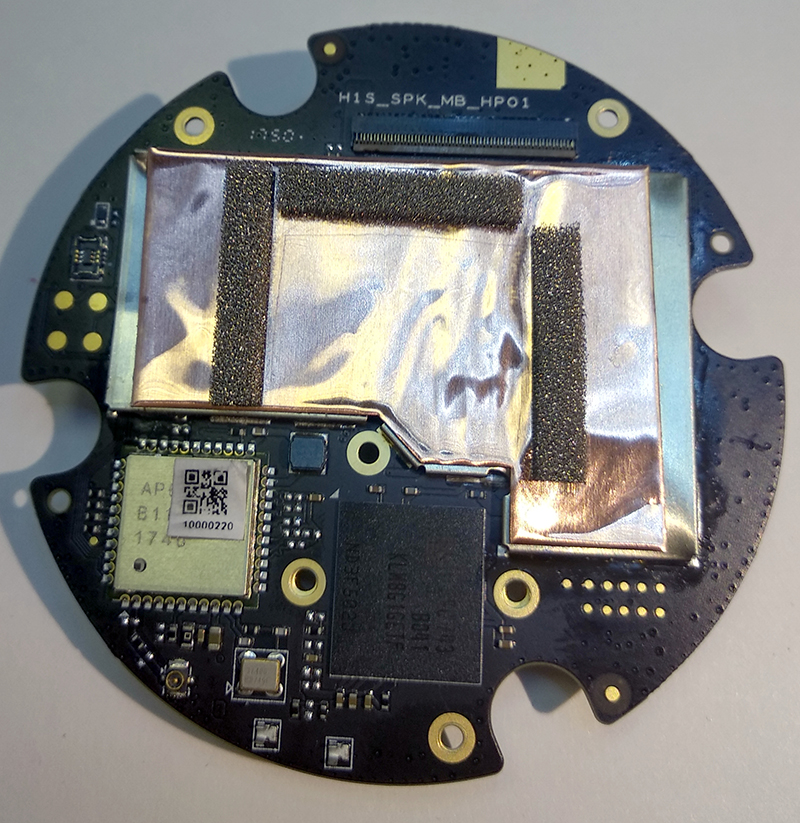
That's right, under the screen we see the Amlogic S912 processor and two Samsung K4A8G165WB 8GB memory dies. The eight-core processor supports smart cards to encrypt digital TV.
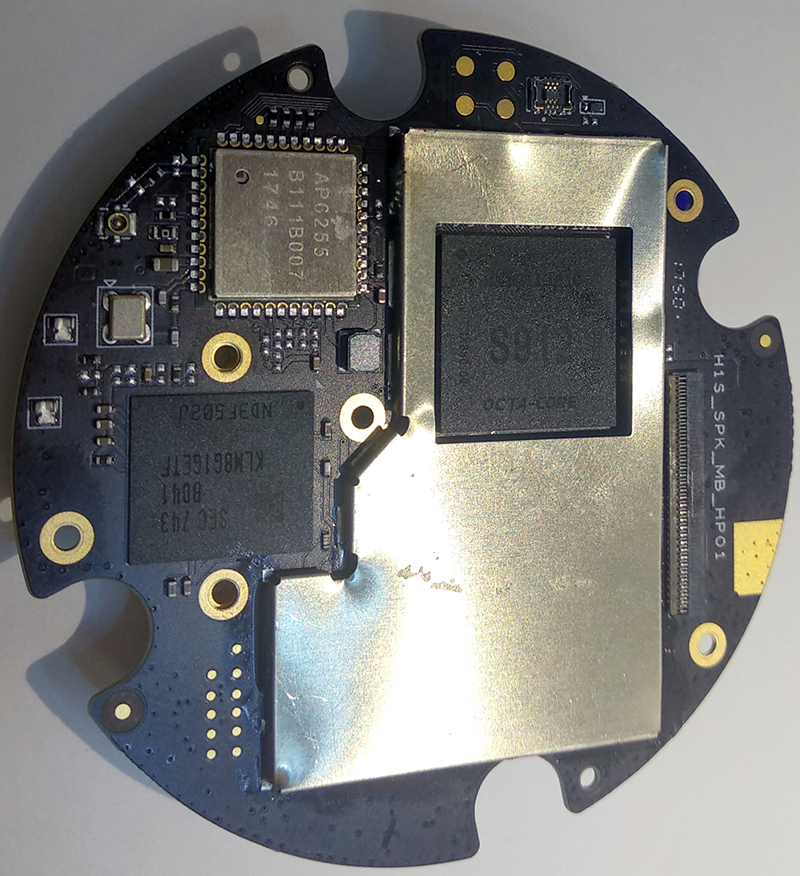
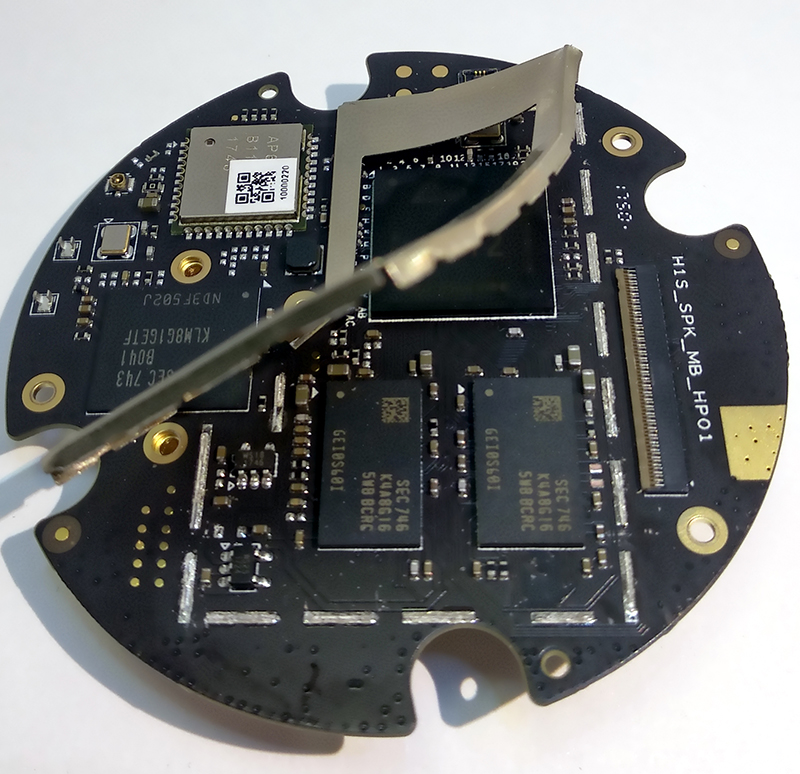
On the other side of the board is a strapping and a thick textolite substrate with a USB connector, through which the speaker is powered. By the way, the battery on the main unit is not, turning off the power will turn off the assistant, but the removable part will be sad to ask for something in Chinese. The power unit of the voice assistant issues 12 V, so it should not be mistakenly connected to the phone. In general, we consider the choice of higher-voltage supply voltage justified given the required power.
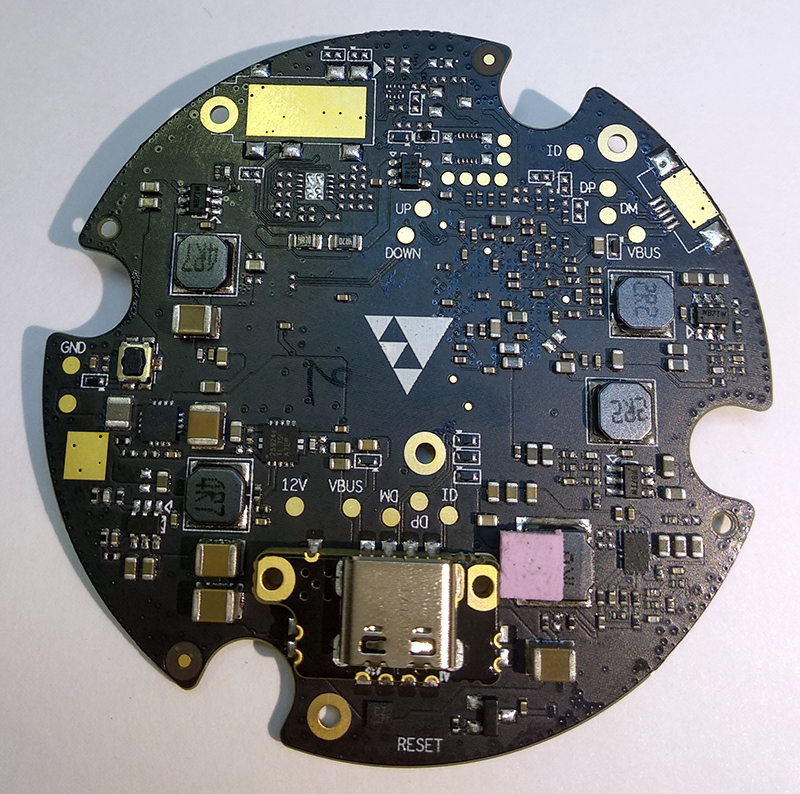
Bottom side of the board


Column Base - Cooling and Power Button
Square rings ... square plates with a round window in the center cover the cylindrical body with a speaker:
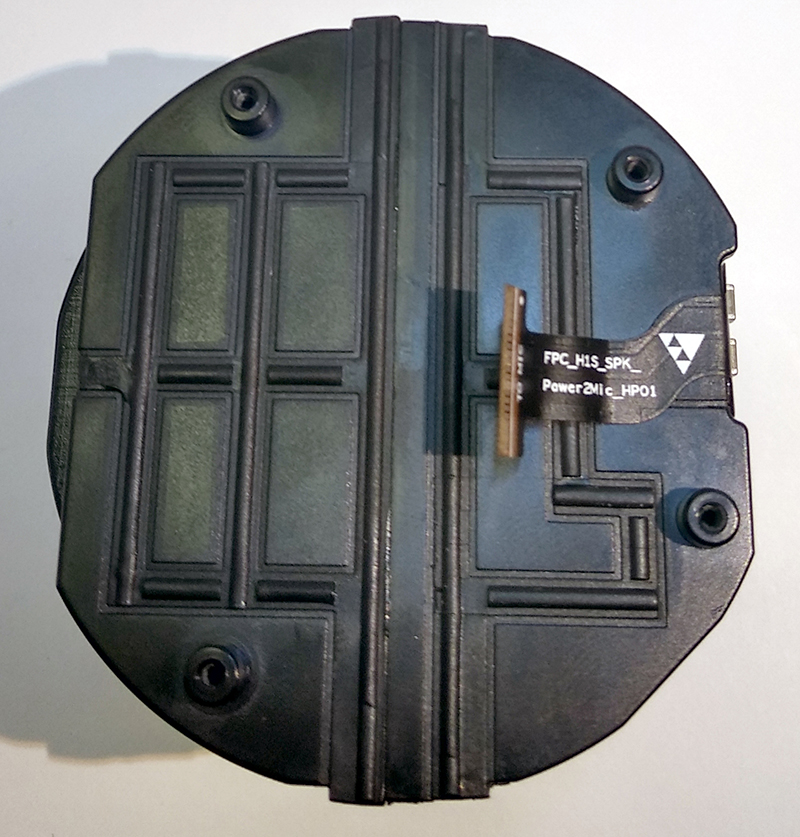

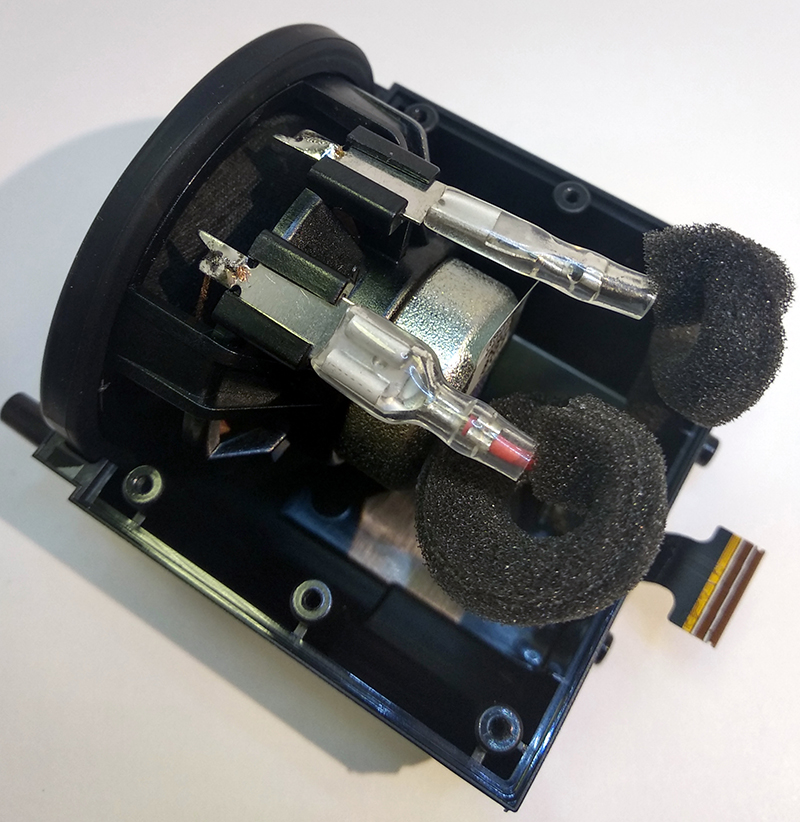
On the case is fixed board of a very powerful amplifier TAS5751M and unidentified m / c 9106B AAK9. upd. Thanks to Karlson_rwa for the help, it turned out to be the AW9106B LED driver

Amplifier board
Without giving any assessment of the design itself, it can be noted that in a fairly compact package (a parallelepiped 10 cm high and with a side of a square of 7.5 cm) there is a lot of everything. It can be seen that a lot of work has been done on the design and circuitry, while the components are selected with a huge margin of performance - the monstrous computing power of an eight-core processor with a powerful video core supporting 4K H265, 16 GB for two processors. Add to this a heaped sound amplifier and hypertrophied LED display and get the question - why such a power is a simple smart speaker? Test sample of the future media center?
We hope you were just as interested as we are. We have a lot of insights on voice assistants, over time we will post most of this information on Habré. Who needs earlier or more - contact the PM. If you are interested in the analysis of a particular column - write too, publish it earlier. You can share your thoughts about the design and components in the comments.
Congratulations on the upcoming / coming New Year and wish all interesting!

Hereinafter, most of the images are clickable.
The Raven H column is released by the Chinese “Google” Baidu, who ordered the development from the Swedish company Teenage Engineering. Structurally, it is a cylindrical tower with 7 colorful plates strung on it in the upper segment with an LED matrix. Onboard platform voice assistant DuerOS, speaks only in Chinese. Moreover, the command word was not indicated in the documentation and I had to dig deeper into the Chinese segment of the Internet in order to find it. If you need someone, we can send an audio file, but for now let's start disassembling.
')
Detachable upper segment with LEDs, which can be carried with you and through it to control the column. The removable block fastens on magnets. That is why it can be rotated at an angle to the horizon of 0 - 90 degrees on the main body bar and this part does not fall off.
The case is assembled without screws, so you need a plastic card for disassembly. Here is what we see inside:


Disassembled Top Panel
Visible board LED matrix and aluminum milled screen. On the bottom of the LED matrix, the FT6236U chip is a 16-bit touch panel microcontroller and four S1819 microphones.
The motherboard of the upper segment is located next to the battery with a capacity of 850 mA · h and a voltage of 3.8 V. From the battery there is a cable to the charge and discharge controllers hidden under the screens. Another loop connects the motherboard and the connector on a small scarf, pressed against the spring contacts next to the magnets in the lower part of the segment.

Touchpad controller

Microphone
We warm up and remove the board of the matrix of LEDs and the touchscreen.

LED matrix and touch plate
Let us consider in more detail the motherboard of the upper segment.

Motherboard screen and heatsink
On the left side, you can discern the markings of the PMI8937 and PM8937 power controllers, often used in mobile technology. It is to them leads the battery cable.

Motherboard with screens removed. Krivenko, but marking is visible
On the right side of the motherboard are unidentified m / c FU74726K and H9TQ17 flash memory with 16 GB x32 power:

Under the two small screens on the motherboard are the WCN3660B wireless module that supports Bluetooth 4, the STM32F051K6 microcontroller, which controls the removable part. As for the C823A, we are not sure, but it looks like it is the CX20823 , which is responsible for voice control. If someone met and can give explanations on this component - write in the comments, include in the text.


Connection board with a button through which power is supplied to the upper segment of the column:


With a portable "remote" finished, consider the main unit. The case is also assembled without the use of fasteners.


Main speaker unit and top connection board
The upper part of the board contains only connectors, but on the bottom four microphones are visible, covered with silicone caps and a mysterious screen.

Bottom side of the backplane
Remove the screen and see ... emptiness:

Even on the board there are two previously seen C823A and riddle labeled PTSI TI 79. upd. Which, as suggested by Karlson_rwa, DC-DC converter TPS62130RG :


Carefully remove the segments from the main cylinder:





Remove the cylinder, observe the bottom board. It has a big screen and a copper plate:


On the bottom board, there is an AP6255 dual-band Wi-Fi module with AC support, KLM8G1 flash memory and a screen, under which the processor should be:

That's right, under the screen we see the Amlogic S912 processor and two Samsung K4A8G165WB 8GB memory dies. The eight-core processor supports smart cards to encrypt digital TV.


On the other side of the board is a strapping and a thick textolite substrate with a USB connector, through which the speaker is powered. By the way, the battery on the main unit is not, turning off the power will turn off the assistant, but the removable part will be sad to ask for something in Chinese. The power unit of the voice assistant issues 12 V, so it should not be mistakenly connected to the phone. In general, we consider the choice of higher-voltage supply voltage justified given the required power.

Bottom side of the board


Column Base - Cooling and Power Button
Square rings ... square plates with a round window in the center cover the cylindrical body with a speaker:



On the case is fixed board of a very powerful amplifier TAS5751M and unidentified m / c 9106B AAK9. upd. Thanks to Karlson_rwa for the help, it turned out to be the AW9106B LED driver

Amplifier board
Without giving any assessment of the design itself, it can be noted that in a fairly compact package (a parallelepiped 10 cm high and with a side of a square of 7.5 cm) there is a lot of everything. It can be seen that a lot of work has been done on the design and circuitry, while the components are selected with a huge margin of performance - the monstrous computing power of an eight-core processor with a powerful video core supporting 4K H265, 16 GB for two processors. Add to this a heaped sound amplifier and hypertrophied LED display and get the question - why such a power is a simple smart speaker? Test sample of the future media center?
We hope you were just as interested as we are. We have a lot of insights on voice assistants, over time we will post most of this information on Habré. Who needs earlier or more - contact the PM. If you are interested in the analysis of a particular column - write too, publish it earlier. You can share your thoughts about the design and components in the comments.
Congratulations on the upcoming / coming New Year and wish all interesting!
Source: https://habr.com/ru/post/434806/
All Articles